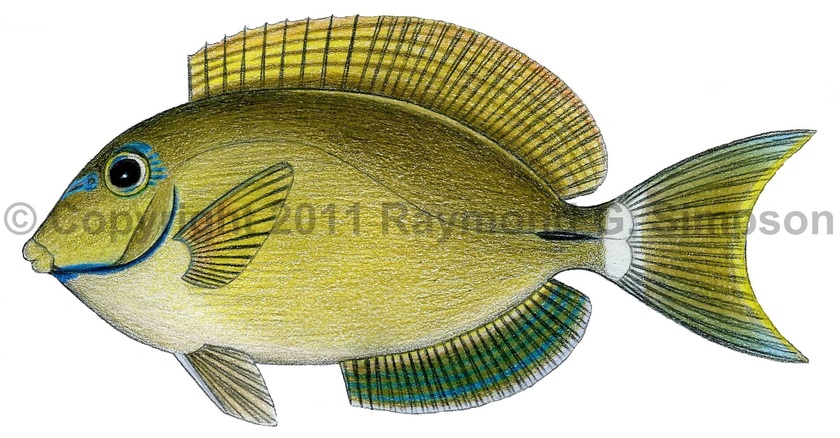
Common Name
Brazilian Surgeonfish
Year Described
Castelnau, 1855
Identification
Dorsal Fin: IX, 23-26
Anal Fin: III, 21-23
Pectoral Fin: 15-16
Pelvic Fin: I, 5
Gill Rakers: 18-24
Body deep, oval-shaped, and compressed. Head profile steep with eye high on head. Mouth terminal and very small. A single blade-like spine on both sides of caudal peduncle. Scales ctenoid and small, covering body, parts of head, and fin bases. Caudal fin lunate.
Color
Variable from olive to yellowish brown, with very fine darker lines on body (only visible close up). A series of blue and yellow lines radiate from posterior eye and around nostrils. Edge of opercle blue. Dorsal fin with alternating yellow-orange and olive lines and an orange margin (sometimes with a very thin blue margin). Anal fin olive to dark brown, with blue lines distally, and a light blue margin. Caudal fin body colored to yellowish, with a yellow or orange margin. A white band may be present on the caudal peduncle. A blue line circles the caudal spine. Pelvic fin black with a white spine. Pectoral fin yellowish to orange.
Size
Maximum size to ~30cm.
Habitat
Coral reefs and rocky reefs.
Range
The coast of Brazil from Parcel Manuel Luiz to Santa Catarina state. Also the Brazilian offshore islands (Fernando de Noronha, Trindade Is., and Atol de Rocas).
References
Bernal, M.A. and L.A. Rocha. 2011. Acanthurus tractus Poey, 1860, a valid western Atlantic species of surgeonfish (Teleostei, Acanthuridae), distinct from Acanthurus bahianus Castelnau, 1855. Zootaxa No. 2905: 63-68.
Other Notes
The name Acanthurus tractus now refers to the common Caribbean Ocean Surgeonfish.